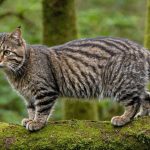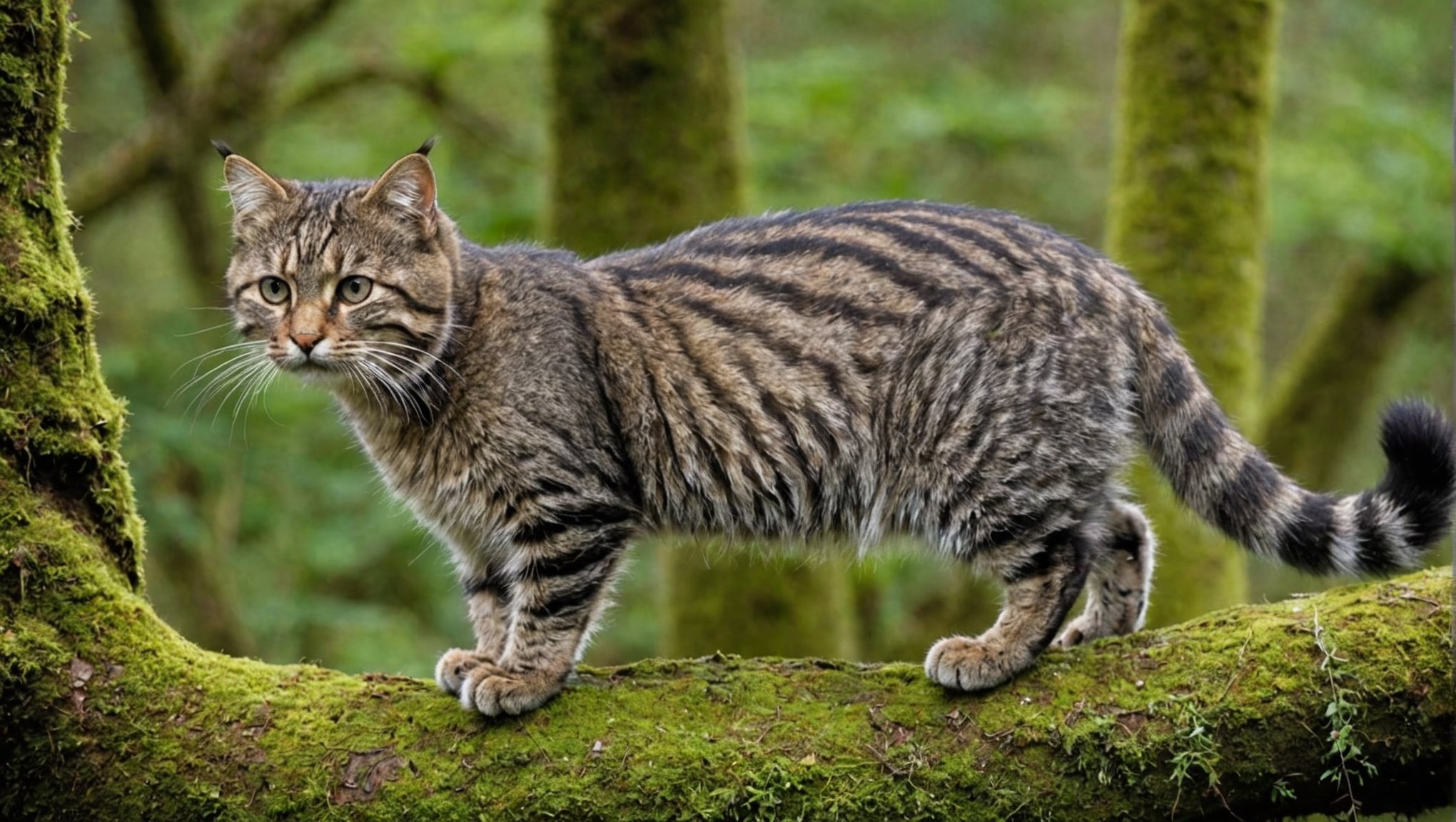Overview of Guardians of the Glen
Guardians of the Glen focuses on preserving the Scottish Wildcat, a species facing significant challenges. Their mission is to protect and restore the wildcat population through dedicated conservation initiatives, which play a crucial role in maintaining Scotland’s biodiversity. The vision of Guardians of the Glen is a future where the Scottish Wildcat thrives in its natural habitat, supporting ecosystem balance and health.
Historically, the Scottish Wildcat population has experienced a marked decline due to habitat loss, human encroachment, and interbreeding with domestic cats. This precarious situation underscores the necessity of conservation efforts. The decline has been ongoing for decades, drastically reducing the wildcat’s presence in Scottish landscapes.
A lire en complément : Discovering Cutting-Edge Solutions: How UK Researchers are Tackling Bird Strikes at Wind Farms
Efforts to conserve this species are significant for numerous reasons. Primarily, the conservation of the Scottish Wildcat aids in preserving the overall biodiversity of the region. As a keystone species, their survival impacts various other flora and fauna within their ecosystem. By focusing on their protection and regeneration, Guardians of the Glen helps ensure a robust and diverse natural environment.
Conservation Initiatives
Guardians of the Glen implements various measures to support wildcat populations. These initiatives include habitat restoration, public awareness campaigns, and controlled breeding programs to prevent further genetic dilution. Their work is critical in reversing the trends and sustaining this integral part of Scotland’s wildlife heritage.
A voir aussi : Essential Tips for UK Residents: How to Build the Perfect Bat Boxes in Your Local Area
Key Initiatives for Scottish Wildcat Conservation
Preserving the Scottish wildcat population demands a multi-faceted approach through various conservation projects. One primary focus is on maintaining and restoring natural habitats. Habitat preservation is crucial because wildcats require large territories to thrive. Several habitat restoration projects aim to enhance these areas, restoring them to their natural state to support the wildcat population. Protected areas play a key role here, offering a safe haven for these majestic creatures.
Habitat Preservation Strategies
In habitat preservation, the significance of protecting natural habitats cannot be overstated. Current initiatives focus on transforming regions back to their original ecosystems, providing a conducive environment for wildcats. Protected lands act as a critical refuge, ensuring a safe space for wildcats away from human interference.
Breeding Programs and Genetic Diversity
Captive breeding initiatives are vital in supporting population numbers. These programs are carefully designed, encompassing genetic assessments. Such assessments are crucial for maintaining genetic diversity, a cornerstone for the species’ longevity. Wildlife organizations collaborate to ensure these programs’ success, contributing their expertise and resources.
Community Engagement and Education
Community involvement is pivotal. Engaging local communities through training programs fosters a sense of responsibility towards conservation efforts. Public awareness campaigns highlight the importance of saving the Scottish wildcat, encouraging volunteer involvement. Volunteers become invaluable contributors to these conservation projects, aiding efforts through various supportive activities.
Challenges Faced in Conservation Efforts
Conservation challenges often revolve around the complex relationship between humans and wildlife. Human-wildlife conflict poses a significant threat to Scottish Wildcats, where encroachment on habitats leads to competition for resources. As urban areas expand and the countryside is increasingly converted for agricultural use, wildcats are forced into smaller, fragmented habitats, which threatens their survival.
Habitat fragmentation is another prevalent concern that affects Scottish Wildcats. It results in isolated populations, which can limit genetic diversity and increase the risk of disease. Fragmented landscapes often cut off corridors essential for the movement and interbreeding between different wildcat populations. This, in turn, diminishes the ability to maintain a healthy population.
Invasive species further exacerbate these challenges. They can outcompete native species for food and resources or introduce new diseases. For Scottish Wildcats, invasive species like domestic cats pose a dual threat: competition and hybridisation. Hybridisation occurs when domestic cats breed with wildcats, diluting the gene pool of pure Scottish Wildcats.
To successfully navigate these threats to Scottish Wildcats, conservation efforts need to prioritise strategies addressing human encroachment, conserve larger continuous habitats, and manage the spread of invasive species. Implementing these approaches will help secure a future for this iconic native species amid varied and pressing conservation challenges.
Success Stories and Impact
The Scottish Wildcat success stories serve as inspirational examples in conservation efforts. Numerous projects have successfully impacted the wildcat populations, leading to promising recovery statistics. For instance, dedicated initiatives have seen population numbers increase by notable margins due to strategic habitat restoration and community engagement efforts. Research has been pivotal, with field researchers and volunteers sharing compelling testimonials about their hands-on experiences and the palpable improvements witnessed in wildcat habitats.
Recap of Successful Initiatives
Among the most striking initiatives are those that have not only protected but also enhanced the wildcat populations. Significant recovery has been attributed to the meticulous implementation of conservation strategies. Statistics reveal a gradual yet steady increase in wildcats, showcasing the tangible outcomes of these targeted efforts. Researchers recount their experiences with an enthusiastic affirmation of the visible transformations in endangered habitats, often citing personal anecdotes highlighting wildcat resilience.
Recognition and Support from Organizations
The efforts have not gone unnoticed. Projects have received numerous awards and recognitions, underscoring their success and influence. Notably, partnerships have been forged with both national and international bodies, providing critical support. Funding and grants from these organizations continue to propel ongoing projects, ensuring the initiatives maintain momentum and ambitiously chase enhanced conservation goals.
How to Support Guardians of the Glen
The health of our environment directly ties to our participation in conservation efforts. One impactful way to get involved is through volunteering with organisations like Guardians of the Glen. They offer multiple volunteer opportunities suitable for various interests and skill sets. Engaging hands-on can provide a deeper connection to the work being done and contribute to meaningful change.
Beyond volunteering, financial donations can substantially support conservation projects. These contributions help fund essential initiatives aimed at preserving natural habitats and species. Even modest donations can collectively make a significant impact.
Another powerful way to assist is by promoting awareness through social media and advocacy. By sharing information online or participating in awareness campaigns, you can amplify the message and reach wider audiences. Advocacy doesn’t require being an expert; simply spreading the word about the importance of conservation can inspire others to take action.
Getting involved doesn’t just mean active participation. It also encompasses the influence of spreading awareness and financial support. Each action, whether large or small, contributes to the broader conservation mission. Together, these efforts can drive substantial change and ensure a healthier planet for future generations.











